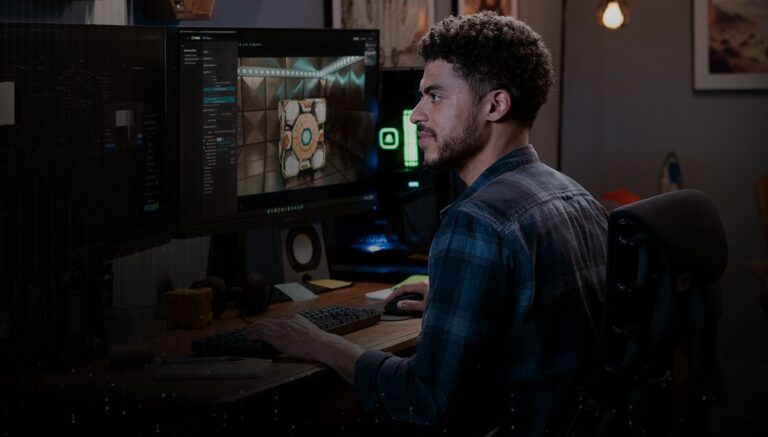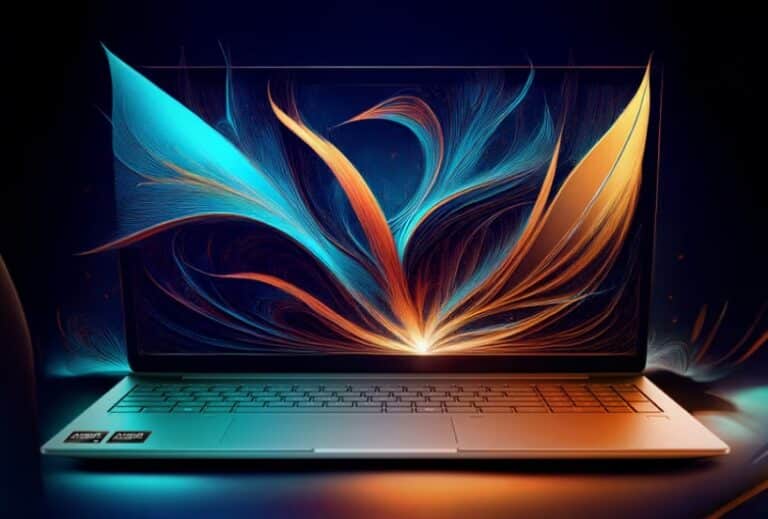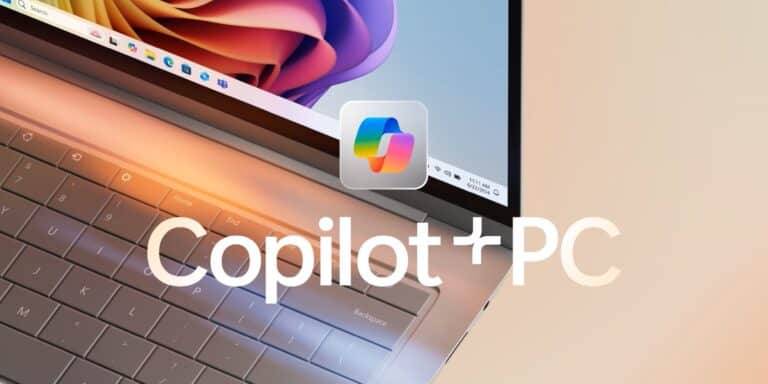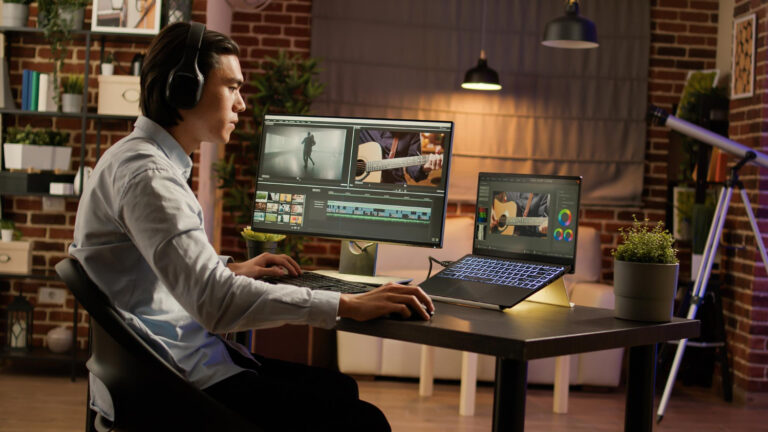Key Facts at a Glance
- NPUs (Neural Processing Units) are dedicated AI chips in modern PCs that handle matrix calculations faster and more efficiently than CPUs or GPUs alone
- On-device AI processing means your data stays local—no cloud upload required for tasks like background removal, live transcription, or smart photo edits
- Real-world benefits include instant image cleanup, live caption generation, background blur during video calls, and AI assistants that work offline
- Performance benchmarks: Modern AI PCs deliver 40+ TOPS (trillion operations per second), but memory speed and software optimization matter more than raw TOPS numbers
- Best use cases: Content creators, students, streamers, and small teams who need privacy-focused AI tools without monthly subscriptions or internet dependency
What Makes an AI PC Different
Traditional computers process AI tasks through CPUs or GPUs. An AI PC adds a third processing component: the Neural Processing Unit. This specialized chip accelerates machine learning calculations—the mathematical operations that power everything from photo enhancement to voice recognition.
The practical difference shows up in everyday tasks. When you apply an AI filter to a photo on a standard laptop, the CPU handles the work while draining battery and slowing other processes. An AI PC routes that same task to the NPU, completing it faster while keeping the CPU free for other work. Battery life improves because NPUs consume less power for sustained AI operations.
On-Device Processing: Privacy and Speed Advantages
Cloud-based AI services send your files, photos, or voice recordings to remote servers for processing. This creates three problems: you need a stable internet connection, your data travels through third-party infrastructure, and you pay recurring subscription fees.
On-device AI solves these issues. The NPU processes everything locally on your machine. Your creative files never leave your computer. You work at full speed whether you’re on campus Wi-Fi, tethered to a phone hotspot, or completely offline.
For students editing presentations late at night, streamers who can’t risk internet hiccups during live broadcasts, or freelance photographers protecting client work, local processing removes dependencies and security concerns.
Real Applications for Everyday Creators

AI PC is undoubtedly beneficial for creators, improving and facilitating their tasks. Image credit: NVIDIA
Instant Image Enhancement
Background removal used to require pixel-perfect manual selection in Photoshop. AI PCs run segmentation models that identify subjects in under two seconds. You drag a photo into your editor, click “remove background,” and the NPU processes the entire image while you move to the next task.
Adobe Lightroom and similar tools now leverage NPUs to apply noise reduction, upscaling, and selective adjustments without the multi-second delays common on older hardware. Video editors working in Vegas Magix see similar acceleration when applying AI-powered stabilization or object removal to footage.
Live Caption Generation
Students attending online lectures, remote team members in noisy environments, and content creators editing interview footage all benefit from automatic transcription. AI PCs generate captions in real-time using on-device speech recognition models.
Microsoft’s Windows Studio Effects runs audio denoising and voice isolation directly on the NPU. Background noise—keyboard clicks, traffic sounds, household activity—gets filtered out before your microphone signal reaches video conferencing software. The CPU stays available for encoding your video stream, so call quality remains smooth even on modest hardware.
Local AI Assistants
Smaller language models (under 10 billion parameters) now fit on consumer PCs. Tools like Rewind.ai demonstrated at Intel Innovation 2023 record your screen activity, index everything you type or view, and let you search past work using natural language queries—all processed locally without cloud uploads.
For research-heavy workflows, this means asking “show me that climate data visualization I saw last week” and immediately retrieving the exact chart, even if you’ve closed dozens of tabs since then. Your query doesn’t leave your device, so sensitive research data remains private.
Hardware Components That Matter
CPU, GPU, and NPU: Which Does What
AI workloads divide into three performance categories:
| Task Type | Best Processor | Why |
|---|---|---|
| Single quick inference (voice commands, simple classifications) | CPU (especially efficient E-cores) | Low latency, good for short bursts |
| Graphics-intensive AI (3D model texturing, heavy image processing) | GPU | Parallel processing power for large datasets |
| Sustained background AI (live captions, continuous transcription, always-on assistants) | NPU | Power-efficient for long-running tasks |
Intel’s Core Ultra architecture includes performance-focused P-cores, efficiency-focused E-cores, an integrated GPU, and an NPU—giving software the flexibility to route work to the most appropriate component. The same photo enhancement might use the GPU for initial processing, then hand off to the NPU for ongoing adjustments while you edit other images.
Beyond TOPS: What Actually Affects Performance
TOPS (trillion operations per second) became the go-to benchmark for comparing AI PCs. Marketing materials highlight “40 TOPS,” “50 TOPS,” or higher numbers. Reality proves more nuanced.
TOPS measures calculation volume, not calculation quality. An NPU might complete more operations per second but take longer to produce useful results if it lacks efficient memory access. Language models in particular depend on moving large datasets between memory and processor. A system with fast unified memory and 30 TOPS can outperform a competitor with 50 TOPS but slower memory architecture.
Software optimization plays an equally important role. Intel’s OpenVINO toolkit includes over 200 pre-trained models specifically tuned for PC hardware. Developers using OpenVINO gain immediate access to speech recognition, object detection, and text generation models that run efficiently on Intel NPUs without requiring custom optimization work.
Practical Workflows for Different User Types
Students: Research and Note-Taking
Lecture recordings get automatically transcribed with timestamps. Highlight a passage in your notes, and the on-device assistant surfaces related material from past readings—no manual tagging required. When drafting essays, local language models suggest citations and check for logical flow without uploading your unpublished work to external services.
AI PCs handle these tasks simultaneously without performance degradation. The NPU runs continuous transcription, the CPU manages your word processor, and the GPU renders any embedded charts or diagrams.
Streamers: Real-Time Content Enhancement
Background replacement during live streams traditionally required green screens and controlled lighting. Modern NPUs run semantic segmentation models that separate you from your background in real-time, even with complex hair edges or movement. The processing happens fast enough for 60fps streaming with imperceptible latency.
Audio enhancement also runs live: the NPU suppresses keyboard noise, fan hum, and household sounds while preserving voice quality. This frees the CPU and GPU to handle game rendering or screen capture without dropped frames.
Small Creative Teams: Collaborative Editing
A photographer sends RAW files to a video producer who needs quick previews. AI upscaling generates high-quality proxies instantly—no wait for cloud processing or subscription service. The editor applies color grading suggestions generated by an on-device model trained on the team’s previous work, maintaining visual consistency across projects.
Version control happens locally. Changes get tracked and previous states remain accessible without cloud storage fees. For teams handling client work under non-disclosure agreements, keeping all processing on-device eliminates third-party exposure.
Software Ecosystem: What Developers Are Building

Coding, software development – artistic impression. Image credit: ThisisEngineering via Unsplash, free license
Operating System Integration
Windows DirectML acts as the scheduler for AI workloads, routing different tasks to CPU, GPU, or NPU based on real-time system load. Intel contributed optimizations to DirectML that benefit all Windows AI PCs, not just Intel-powered machines. This system-level coordination prevents multiple AI tasks from competing for the same resources and degrading performance.
Application Support
Adobe integrated NPU acceleration into Lightroom for denoise and upscaling features. Vegas Magix uses NPUs for video stabilization and object removal. Microsoft’s own Windows Studio Effects—background blur, eye contact correction, auto-framing—run exclusively on NPUs when available, falling back to CPU processing on older hardware.
The difference becomes obvious during extended editing sessions. An hour of video work on a traditional laptop might drain 60% of battery. The same work on an AI PC with NPU offload consumes closer to 30%, because the NPU handles sustained AI tasks more efficiently than the CPU.
Developer Tools
Intel’s OpenVINO provides a model conversion API that accepts PyTorch and TensorFlow models and optimizes them for PC hardware. Developers can take an existing cloud-based AI model, quantize it to reduce size, convert it through OpenVINO, and deploy it as an on-device application—often within the same day.
Hugging Face, the open-source model repository, now includes PC-optimized versions of popular models. Meta’s Llama 2 and Google’s Gemini both have quantized variants designed to run on consumer hardware with under 16GB RAM. This accessibility means small development teams can build AI features without enterprise infrastructure.
Limitations and Realistic Expectations
Model Size Constraints
The largest language models (100+ billion parameters) still require datacenter resources. On-device models max out around 10 billion parameters, which limits complexity for some tasks. Creative writing assistance works well; deep technical code generation shows gaps.
Battery Life vs Performance Trade-offs
NPUs improve efficiency for sustained tasks, but peak performance still demands power. Running complex image generation models at maximum quality drains battery faster than basic editing, even with NPU acceleration. Users need to balance quality settings with runtime needs.
Software Maturity
Many applications haven’t integrated NPU support yet. Your AI-enhanced photo editor might leverage the NPU, while your video conferencing tool still relies entirely on CPU processing. This fragmentation means real-world performance gains vary by workflow.
Buying Guidance for Different Budgets
Entry-Level AI PCs ($800-$1,200)
These machines include first-generation NPUs (around 10-15 TOPS), sufficient for live captions, basic image enhancement, and lightweight AI assistants. Best suited for students and casual creators who want battery life improvements and privacy benefits without premium pricing.
Mid-Range Models ($1,200-$2,000)
Systems in this bracket deliver 30-40 TOPS, balanced CPU and GPU performance, and 16-32GB RAM. Ideal for streamers, freelance photographers, and small production teams who need reliable performance across diverse tasks.
High-End Workstations ($2,000+)
Premium AI PCs combine 50+ TOPS NPUs with high-end CPUs, discrete GPUs, and 32GB+ RAM. These handle simultaneous 4K video editing, AI upscaling, live stream encoding, and background model training without slowdowns. Professional creators and agencies working under tight deadlines benefit most from this tier.
Privacy Considerations
Data That Stays Local
Voice commands processed through Windows Studio Effects never reach cloud servers—the NPU handles wake word detection and command parsing entirely on-device. Photo edits in applications using DirectML similarly process locally unless you explicitly choose cloud-based features.
Transparency Requirements
Users should verify which features run locally versus which upload data. Application settings often distinguish between “AI assist” (usually local) and “premium AI features” (typically cloud-based). Reading privacy policies and checking network activity during AI tasks reveals actual behavior.
Enterprise Controls
Organizations deploying AI PCs need audit trails showing when and what data leaves devices. Microsoft’s group policy settings let IT teams disable cloud escalation for sensitive departments while allowing it for other users. Proper governance requires testing these controls before broad deployment.
The Hybrid AI Future
Complete independence from cloud AI isn’t practical for all tasks. The emerging pattern combines local and cloud processing strategically:
Image editing: Generate low-resolution previews on-device for fast iteration, then process final high-resolution versions in the cloud overnight when quality matters more than speed.
Writing assistance: Use local models for grammar checking and basic suggestions, escalate to cloud models for complex research queries or domain-specific fact-checking.
Voice interaction: Process wake words and simple commands locally, hand off complex multi-turn conversations to cloud models when necessary.
This hybrid approach maximizes privacy for routine work while retaining access to more powerful cloud models when tasks exceed on-device capabilities.
Measuring Real-World Performance
Practical Benchmarks That Matter
Instead of focusing solely on TOPS specifications, evaluate:
- Time to complete background removal on a 50-image batch (measures both NPU speed and software efficiency)
- Battery drain during 2 hours of video calls with AI enhancements enabled (reveals practical efficiency gains)
- Responsiveness when running three AI-enhanced applications simultaneously (tests system-level coordination)
User Experience Factors
Quality of AI outputs matters more than raw speed for creative work. A language model that suggests ten mediocre edits in three seconds helps less than a model producing three excellent suggestions in five seconds. Benchmark comparisons should evaluate output quality, not just processing speed.
Common Misconceptions Addressed
“All AI PCs perform identically if they meet the TOPS threshold”
False. Memory bandwidth, software optimization, and thermal design all significantly impact performance even when TOPS ratings match.
“NPUs will replace GPUs for creative work”
Incorrect. NPUs excel at specific AI tasks but lack the general-purpose parallel processing power GPUs provide for rendering, encoding, and non-AI graphics work.
“On-device AI eliminates the need for internet connections”
Partially true. Many features work offline, but hybrid workflows that combine local and cloud processing remain more practical for complex projects.
Looking Forward
NPU integration represents the first step toward more capable on-device AI. Upcoming hardware generations will likely double or triple current TOPS ratings while reducing power consumption further. More importantly, software developers are just beginning to explore what on-device AI enables.
For everyday creators—students managing research, streamers building audiences, small teams producing client work—AI PCs offer tangible benefits today: better battery life, privacy-preserving tools, and reduced dependence on internet connections and subscription services. The technology has moved beyond prototype demonstrations into practical daily use.
The key question for potential buyers: do your specific workflows benefit enough from local AI processing to justify the premium over traditional laptops? For battery-intensive mobile work, privacy-sensitive projects, and AI-heavy creative tasks, the answer increasingly points toward yes.
Further Resources:
- Intel OpenVINO toolkit and model zoo: Pre-optimized AI models for PC deployment
- Microsoft DirectML documentation: Technical details on Windows AI workload scheduling
- Hugging Face model repository: Open-source AI models including PC-optimized variants
If you are interested in this topic, we suggest you check our articles:
- What is AI Infrastructure? A Detailed Guide on Key Components
- 10 Real Life Examples of Sustainable AI in Action
- AI-Powered Supercomputers: Advancing Technology and Innovation
Sources: Windows Forum, PCmag, TaskFoundry, The Register, XDA, Intel
Written by Alius Noreika




